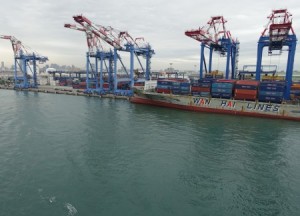
After visiting Kaohsiung in southern Taiwan, our ship headed north to another commercial Taiwanese port, Keelung. As I sipped tea on my balcony, I was fascinated by the mechanized way that enormous containers were placed on and off ocean going vessels. Our cruise ship passed thousands of stacked containers at this port as well as in Kaohsiung. I saw first hand why most cruise bloggers recommended that visitors to this port should not attempt to navigate the Keelung port on foot.
The focal point was Taipei, an hours drive away. On the first day in port, we chose to take a half day shore excursion that visited a few notable sites in Taipei- Chiang Kai Shek Memorial Hall, Taipei 101, and Lungshan Temple. Like most cruise excursions, our time at each place was limited.
When I was growing up, Chiang Kai-Shek was considered the leader of China even though he lived in Taiwan. For readers who are unfamiliar with this aspect of Chinese history, I will provide a brief overview.
At the conclusion of China’s civil war in 1949, Mao Zedong became the Communist leader of the People’s Republic of China. Prior to this change in leadership, the Chinese Nationalist Party (KMT) had ruled China for more than two decades. From 1949 until his death in 1979, Chiang Kai-Shek led the exiled KMT government in Taiwan.
Under Chiang’s leadership, Taiwan went through economic modernization. For a couple of decades, the United States guaranteed Taiwan’s defense. For a myriad of reasons, many other countries recognized Chiang Kai-Shek’s government as China’s legitimate government. For example, Taiwan would control China’s seat in the United Nations until Chiang’s death. Four years after Chiang died (1979), the United States broke off diplomatic relations with Taiwan and established full relations with the People’s Republic of China.
Today, “China” is represented by two separate authorities: Taiwan (Republic of China) and China (People’s Republic of China). Taiwan has remained a self-sustaining, democratically-elected government that is independent from Beijing.
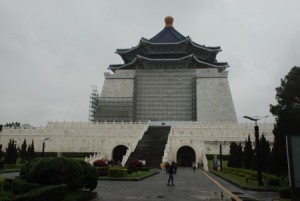
Taipei, Taiwan
To celebrate Chiang Kai-Shek’s life, a large memorial was established in Taipei. Our stop at this historic site was far too short. As dark clouds hung overhead, we scampered up the steps to the main hall.
Our guide directed us to a place where we could take panoramic shots of the parklike setting. With only 15 minutes to spare, we were unable to visit the main floor which houses a library and museum documenting Chiang Kai-shek’s life and career and exhibits related to Chinese and Taiwan history.
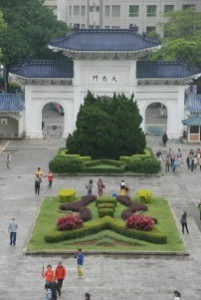
Instead, we focused on taking more pictures of the impressive grounds.
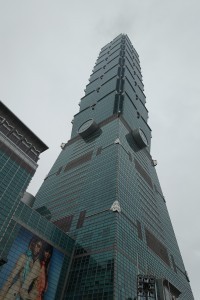
Next, we had an extended stopped at Taipei 101. Skyscraper tours are a hit or miss opportunity to see a city. Bright sunny days can cause pictures that are full of sun spots and glare while rainy days leave you wondering why you chose the tour.
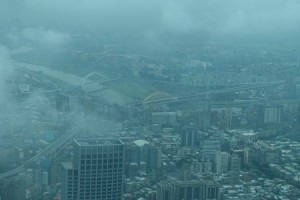
In retrospect, too much time was spent waiting in lines to get on the elevator, especially since our view was dramatically impacted by low lying clouds. Many notable travel sites have marveled over the quick ride up. Yes, Taipei 101 is currently the world’s tallest building in the categories of highest structurally, highest roof, and highest occupied floor.
Toshiba installed the world’s two fastest elevators. With top speeds of 1010 m/min, visitors travel from Level B1 to 89 in 39 seconds.

On the 87th floor, we viewed a 900-ton tuned mass damper that is designed to stabilize the building and to counter earthquakes and typhoons.
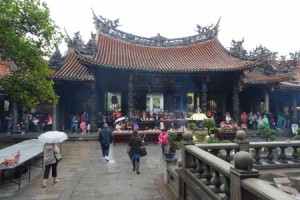
Taipei, Taiwan
The Lungshan Temple which is dedicated to the Buddhist Goddess of Mercy was founded in 1738. It is one of largest and oldest temples in Taiwan. Natural disasters, normal wear and tear, war, and neglect have caused the buildings to be renovated many times. Today’s architectural design was created by Wang Yi-shun. His work on this temple was completed in 1924. Our guide mentioned that over time some aspects of Taoism and Confucian deities were also added to the temple. He claimed that more than 100 deities could be found on the property.
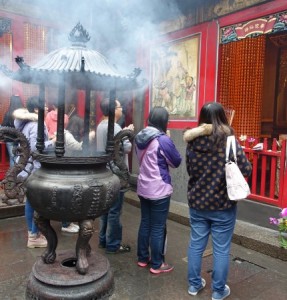
Our view of this ornate structure was minimized due to the number of people crowded into a small area and a torrential downpour. Devout Buddhists could be seen reading small books, chanting prayers, lighting incense, leaving red objects on the tables, bringing food and flowers for offerings, and standing silently before most of the shrines.
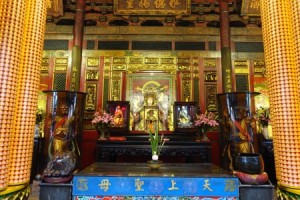
Lungshan Temple
Taipei, Taiwan
Interspersed among the practicing Buddhists were hordes of tourists who invaded the worshippers’ space. I was just as guilty as the others as I snapped one picture after another. It’s an odd feeling to be dropped off at a sacred place during one its busiest times- a weekend afternoon.
As our tour bus left Taipei and headed back to the port, I observed a bustling city that is filled with a mixture of history and culture. The Lungshan Temple illustrated the effects of an ancient religion on the life of modern Taiwanese whereas the Chiang Kai Shek Memorial Hall put Taiwanese history into the larger framework of world history. Peering through the clouds atop Taipei 101, I could see the positive effects of Taiwan’s modernization. This half day in Taipei went by too quickly, but it was well worth the ride.
Related Posts
Precruise Exploration of Hong Kong
Fo Guang Shan Buddha Memorial Center
Precautions When Traveling to Third World Countries
15 Safety Tips for Women Traveling Solo
6 Tips to Promote a Healthy Cruise Experience
Sandra’s Bio
Sandra Bornstein is the author of MAY THIS BE THE BEST YEAR OF YOUR LIFE. It is available on Amazon. Sandra’s memoir highlights her living and teaching adventure in Bangalore, India. She is a licensed Colorado teacher who has taught K-12 students in the United States and abroad as well as college level courses. Sandra is married and has four adult sons. The memoir was a finalist in the Travel category for the 2013 Next Generation Indie Book Awards, the 2013 International Book Awards, the 2013 National Indie Book Excellence Awards, the 2013 USA Best Book Awards, and received an Honorable Mention award in the Multicultural Non-Fiction category for the 2013 Global ebook Awards.
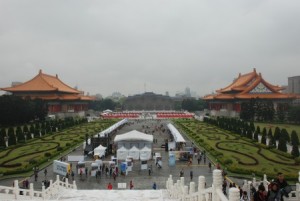

Leave a Reply
You must be logged in to post a comment.